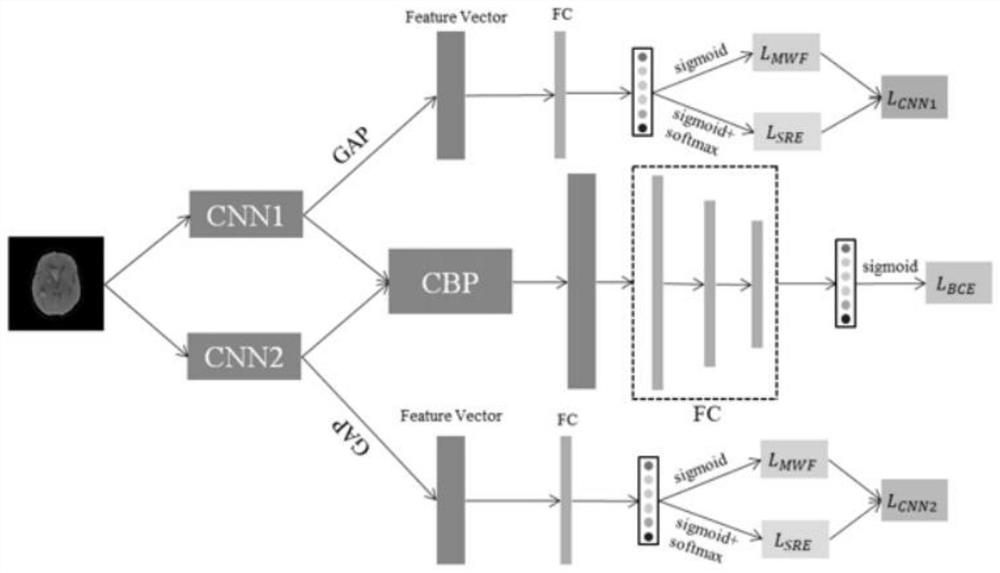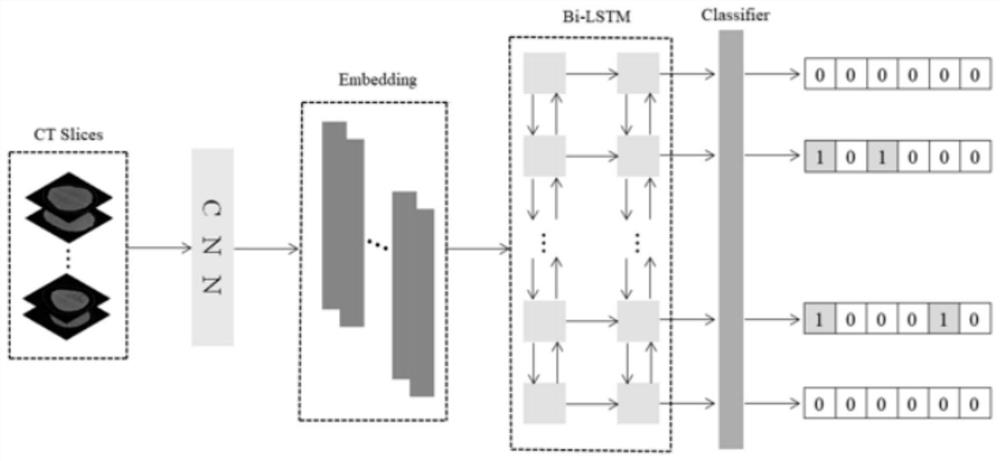Intracranial hemorrhage subtype classification algorithm based on bilinear pooling applied to CT images
A CT image and intracranial hemorrhage technology, applied in the field of intelligent medical image processing, can solve the problems of high dependence and time-consuming doctor's professionalism, achieve the effect of excellent classification performance, improve the ability of feature expression, and solve the problem of sample mining
- Summary
- Abstract
- Description
- Claims
- Application Information
AI Technical Summary
Problems solved by technology
Method used
Image
Examples
Embodiment Construction
[0040] The technical solution of the present invention will be further described below in conjunction with the accompanying drawings, but it is not limited thereto. Any modification or equivalent replacement of the technical solution of the present invention without departing from the spirit and scope of the technical solution of the present invention should be covered by the present invention. within the scope of protection.
[0041]The present invention provides an intracranial hemorrhage subtype classification algorithm based on bilinear pooling applied to CT images. This algorithm innovatively solves the problem of intracranial hemorrhage subtype classification from the perspective of fine-grained classification. The CNN part uses The compact bilinear pooling network architecture improves the feature expression ability of the neural network and improves the classification performance. Bilinear pooling has been proven to be an effective method for solving fine-grained class...
PUM
 Login to View More
Login to View More Abstract
Description
Claims
Application Information
 Login to View More
Login to View More - R&D
- Intellectual Property
- Life Sciences
- Materials
- Tech Scout
- Unparalleled Data Quality
- Higher Quality Content
- 60% Fewer Hallucinations
Browse by: Latest US Patents, China's latest patents, Technical Efficacy Thesaurus, Application Domain, Technology Topic, Popular Technical Reports.
© 2025 PatSnap. All rights reserved.Legal|Privacy policy|Modern Slavery Act Transparency Statement|Sitemap|About US| Contact US: help@patsnap.com



